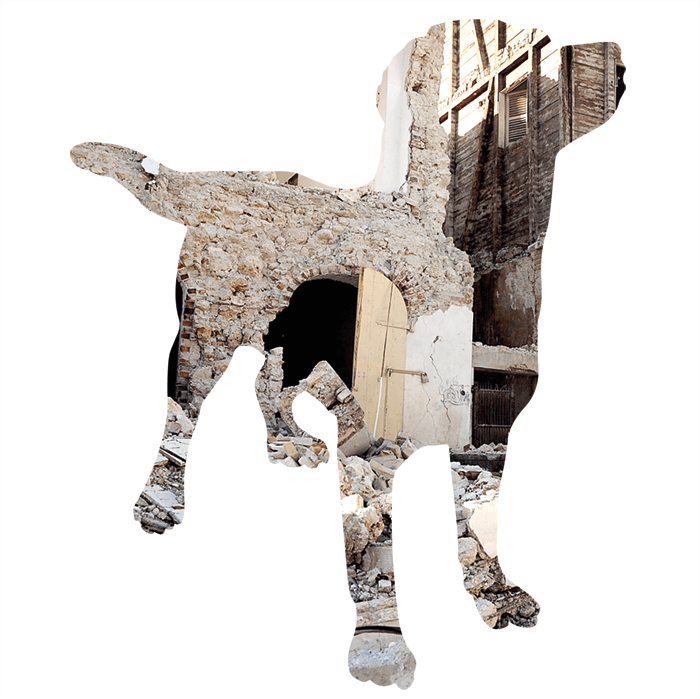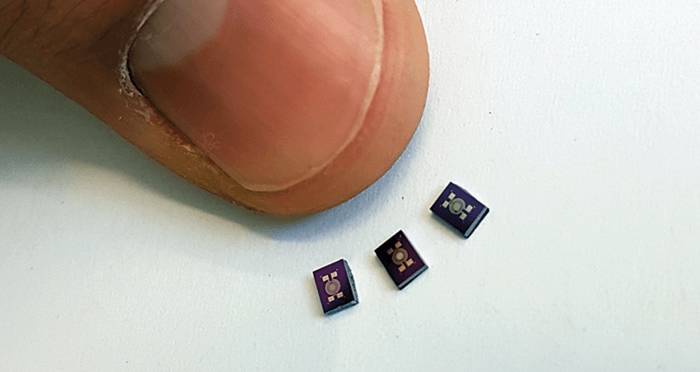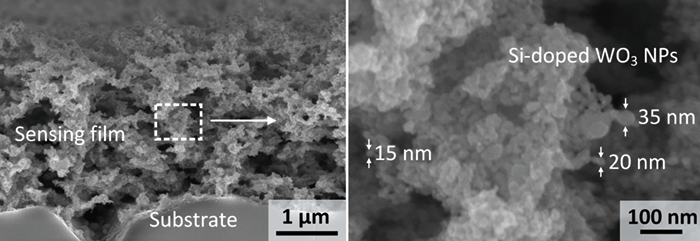
An earthquake strikes, buildings crumble, survivors are buried beneath the rubble. When it comes to search and rescue in the aftermath, every minute counts. Rescue dogs are a valuable resource – but they are far from perfect. “I was surprised when I spoke to first responders about search and rescue missions – I was not aware how limited the operational capabilities of rescue dogs are,” says Andreas Güntner, research associate and team leader in the Particle Technology Laboratory, ETH Zurich. “Sniffing is tremendously exhausting for them, and so they may only operate for ten minutes to half an hour before they need hours of rest.” This revelation kicked off the development of a device designed to sense human breath- and skin-emitted chemicals to assist in search and rescues.
The sensor was inspired by the team’s work in the clinical field. “Our research at ETH focuses on the development of gas sensors for medical breath diagnostics. We had developed portable sensors to detect metabolic tracers, such as acetone, ammonia and isoprene,” says Güntner. “So we asked ourselves: can our sensors sniff out trapped humans as well?”


After years of research, the team delivered a sensor array that incorporates highly porous films based on metal-oxide nanoparticles. “The particles are chemoresistive, changing their resistance upon surface interaction with the analytes, which can be detected as a signal,” says Güntner. “The chip has three such films all based on different materials (Si-doped MoO3, Ti-doped ZnO and Si-doped WO3) designed to sense human breath- and skin-emitted ammonia, isoprene and acetone, respectively.” They applied statistical response evaluation to the array to optimize the sensing performance further, and added commercial humidity and CO2 sensors. Urban search and rescue requires part-per-billion level detection of ammonia, isoprene and acetone, but the state-of-the-art technology needed to detect such low concentrations is not only expensive but also lacks the mobility necessary in such missions. The ETH team’s sensor (pictured) addresses both problems. “We carried out parallel measurements with a bench-top selective reagent ionization time-of-flight mass spectrometer. Our sensor array performed well, with high accuracy of of 19.3 and 21 ppb and outstanding precision for the target compounds acetone, isoprene and ammonia.” The sensors may be referred to as ‘electronic rescue dogs’, but they’re unlikely to replace our faithful friends any time soon. “We are aiming for field tests with first responders, ideally done in parallel with rescue dogs on their training sites,” says Güntner. The team have also used the acetone sensor to monitor fat burn through breath during exercise and fasting and say the ammonia sensor is also promising in the non-invasive detection of kidney dysfunction.
References
- AT Güntner et al., “Sniffing entrapped humans with sensor arrays”, Anal Chem, 17, 4940–4945 (2018). AT Güntner et al., “Noninvasive body fat burn monitoring from exhaled acetone with si-doped Wo3-sensing nanoparticles”, Anal Chem, 89, 10578-10584 (2017).



